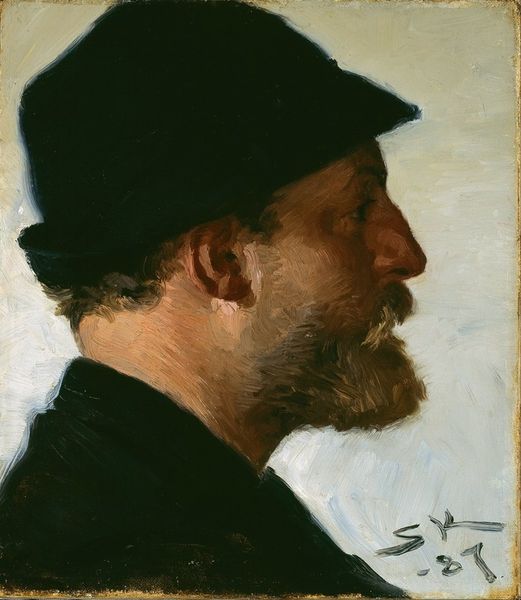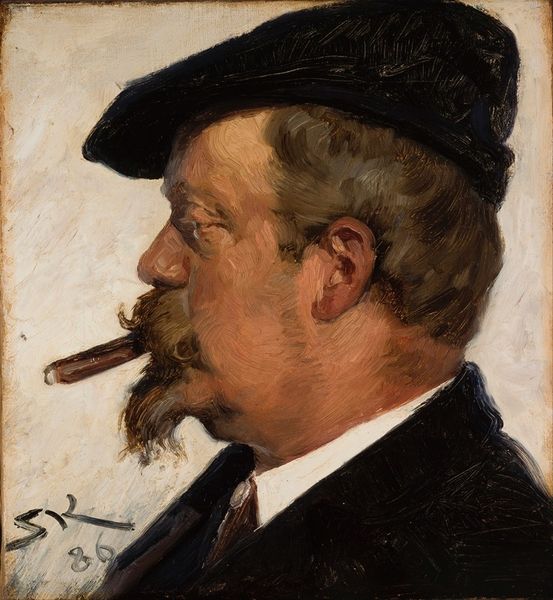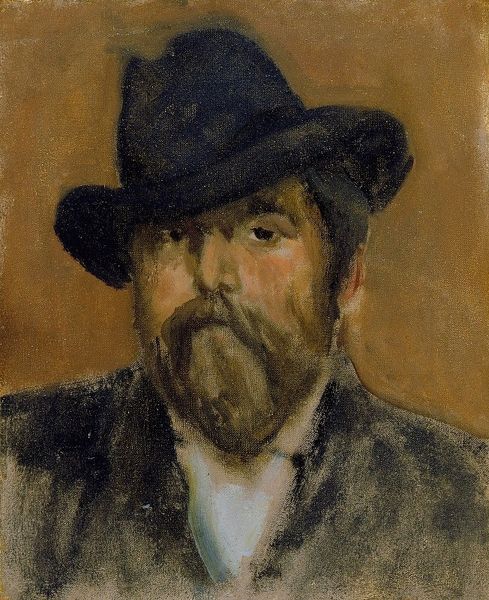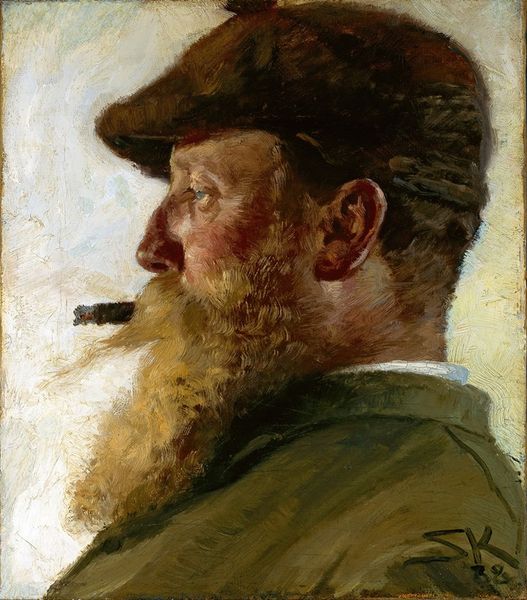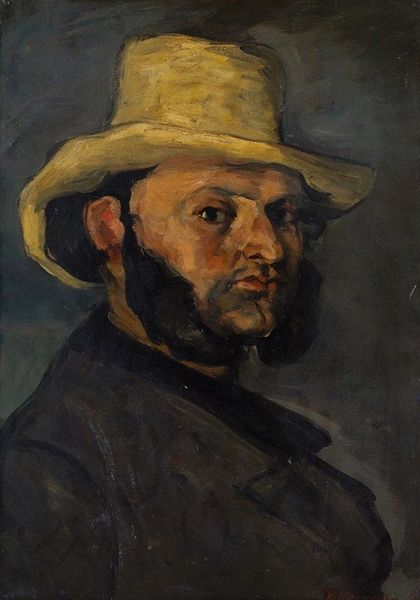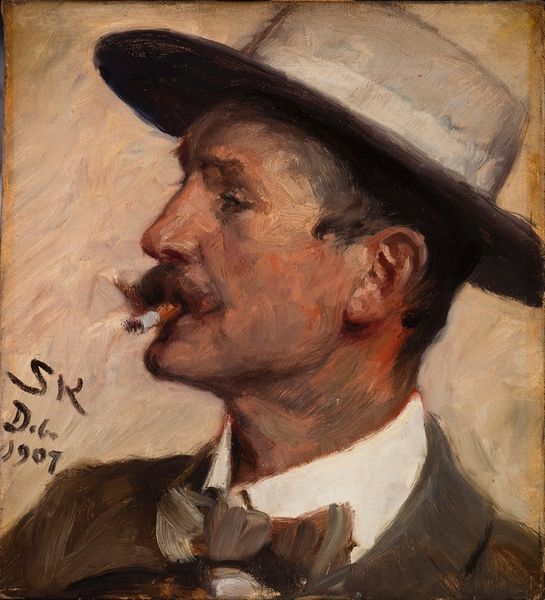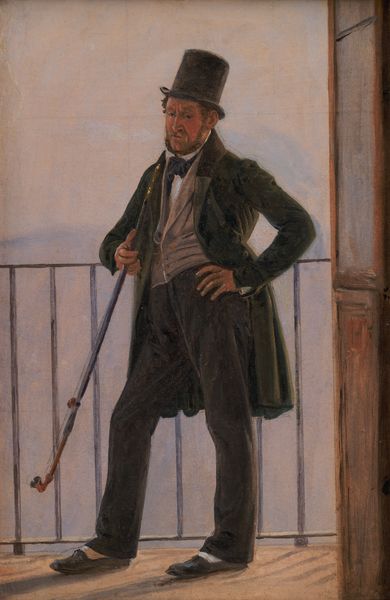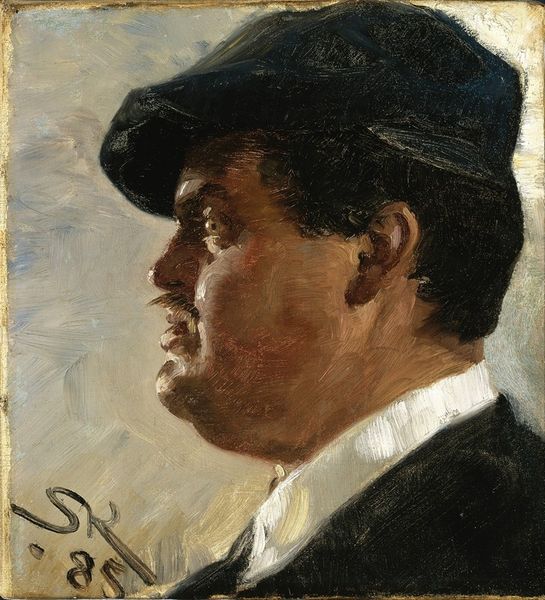
painting, oil-paint
#
portrait
#
painting
#
impressionism
#
oil-paint
#
oil painting
#
intimism
Copyright: Public Domain: Artvee
Curator: Immediately, the somber earth tones and rapid brushstrokes create a sense of immediacy, almost like glimpsing a private moment. Editor: Indeed. What we're seeing here is Peder Severin Krøyer's oil on canvas portrait, "Adrian Stokes," painted in 1886. Look at the way Krøyer captured Stokes. Curator: Right, the textured materiality of the hat! It’s woven from straw, an inexpensive, widely available material. That suggests this isn’t just any portrait; it hints at something about Stokes's connection to the land, or at least the artist’s perception of him. The fact that it’s Skagen, Denmark—this was a colony known for its working class. Was Stokes known for portraying working class people? Editor: No, Stokes himself was an aesthetic painter. The subject's attire—that very proper, patterned suit—clashes with the hat. Still, formally speaking, the composition relies heavily on line and texture. The curve of the brow echoes the curve of the hat brim. Curator: And there's something to be said about Skagen’s burgeoning artistic community. Perhaps the choice of everyday material in the hat speaks to the values—or aspirations—of the artistic community present at the time, making fine art available for more modest social class than nobility. Krøyer often depicted his fellow artists and their milieu; what statement was he making about Stokes and art's value through materiality? Editor: Intriguing. The painting certainly does spark more questions about labor. Look at the artist’s signature in the bottom left: “Skagen” painted boldly across the canvas itself. It is literally incorporating the place where it was made, emphasizing the process behind the artwork itself. Curator: Perhaps there’s something about a work celebrating simplicity, the everyday experience, something so very contrary to, yet intertwined with the more rigid expectations of formal portraiture of the time. Editor: Agreed. Examining how these elements come together in Krøyer’s "Adrian Stokes," brings to light not just what the portrait depicts, but also how it represents broader currents in society and art at the time.
Comments
No comments
Be the first to comment and join the conversation on the ultimate creative platform.

